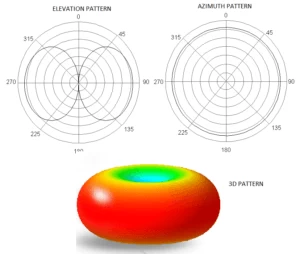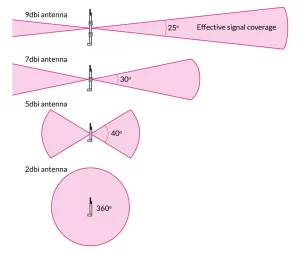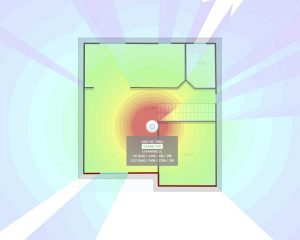Wireless Internet access in the home is a real need, however many have to deal with variable Wi-Fi coverage and some corners of the house or yard have little or no coverage.
Most routers/access points/antennas are limited to a signal strength of 20-30dBm (FCC/CRTC standards) and the maximum unobstructed range is 40-60 feet.
Think of it as a doughnut with the transmitting point in the center. The range is less and variable under/behind the transmitting point. If you have a concrete/brick/ceramic wall between the router/antenna and a device there will be a significant loss.

Manufacturers will sometimes indicate up to 2000 to 4000 ft2 (a 30×30 floor gives 900 ft2) for a mesh system but you have to consider that this measurement is without obstacles or interference, so not the reality.
Moreover, 5Ghz has a shorter range and is more sensitive to interference than 2.4Ghz.

The coverage of a Ubiquiti Unifi AP AC Pro access point (what I have at home) is better than any conventional router. The Wifi signal goes 150-200ft outside my house (theoretical max distance of 400ft).
More technical part
For most routers, the omnidirectional antennas that are used have a gain of 2-3 dBi which limits the range. Access points, like the Unifi UAP Pro, have a gain of 5 to 15dbi (6.5 UAP Pro) and have a wide coverage.
A “standard” router is good at short range for multiple devices that will consume a medium to high amount of bandwidth but will not have a range of more than 50 ft without too much interference.
The ceiling/floor between the 1st and 2nd floor has an impact (especially the bathroom tiles and the air conditioning pipe). A brick wall will block the 5Ghz signal almost completely and many elements will affect the signal.

To optimize the coverage of a “standard” router you have to change the angle of some antennas, that’s why the antennas are mobile.
Finally the device used will have an impact on the range since the tiny antenna of your cell phone will not be able to receive the signal in a usable way, compared to a laptop.
Note that dBi gain calculations are not linear but logarithmic:
- 3 dB of loss = -3 dB = halves the signal strength
- 3 dB of gain = +3 dB = double the signal power
- 10 dB loss = -10 dB = 10 times less signal power
- 10 dB of gain = +10 dB = 10 times more signal power



